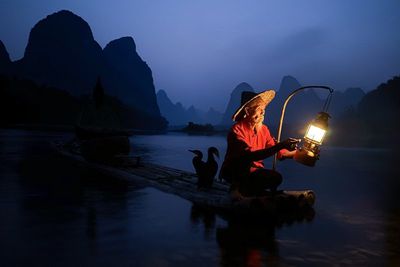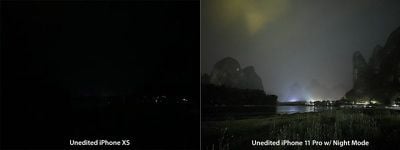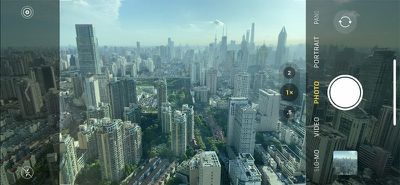Travel photographer Austin Mann typically goes hands-on with new iPhone models to test their camera performance in real world situations, and to test Apple's new iPhone 11 Pro, Mann traveled to China to take pictures.
Mann tested out the new three lens-camera system with telephoto, wide-angle, and ultra wide-angle lenses, the updated Smart HDR, and the new Night mode that's designed for super low light.

The wide-angle lens is the best lens of the bunch with the best shutter range, aperture, autofocus system, and ISO, but Mann says the ultra wide camera still "works really great in normal lighting conditions." It's not the ideal lens for low light, though.
The Ultra Wide works really great in normal lighting conditions and overall I'm thrilled to have it, but you will feel a difference when you move indoors or shoot into the evening. The images are softer than the Wide, and without Night mode you'll be tempted (or forced) to switch back to Wide depending on how limited your light is.
Night mode, says Mann, is "crazy powerful" and easy to use because it activates automatically in situations where lighting is poor. Mann praised Apple's efforts to balance Night mode, preventing night time shots from looking like daytime shots while still preserving detail.

One thing I love about Apple's approach to Night mode is the strategic balance of solving a technical problem while also caring deeply about artistic expression. When you look at the image above, it's clear their team didn't take the let's-make-night-look-like-day approach, as some of their competitors have. Instead, it feels more like an embrace of what it actually is (night) while asking, "How do we capture the feel of this scene in a beautiful way?"
According to Mann, Night mode is the "most dramatic leap forward" we've seen in an iPhone since panorama mode was introduced on the iPhone 5 in 2012. "It's the first time in a long time I've looked at an image and said to myself 'wow, I can't believe I shot this with my iPhone,'" he wrote.

The iPhone 11 and 11 Pro have a new "Capture Outside the Frame" feature that allows more of the scene in front of you to be displayed when taking a photo. What hasn't been highlighted is that this mode also captures a photo.
So, for example, if you take a picture using the wide-angle lens of the iPhone, it also captures a photo with the ultra wide-angle lens, allowing users to decide later how to frame a photo.

Mann said that while he likes the feature, he didn't love the preview of what's outside the frame because it was sometimes distracting when composing an image. For the most part, though, he called it a "great feature" that invites new editing possibilities.
All in all, Mann said that serious photographers should consider getting an iPhone 11 Pro and that the extra cost over the iPhone 11 is worth it.
No matter what iPhone you are using now, if you are serious about shooting photos with your iPhone, this is a year to upgrade. Apple had some serious catching up to do and as a result, this year has brought a tremendous leap in camera capability. Night mode and the Ultra Wide lens will change how we tell stories and express ourselves as artists using our iPhones. Now is a really good time to jump in.
Mann's full iPhone 11 Pro, which has additional details on the technical capabilities of the new phone along with a selection of amazing images, can be read over on his website.






















